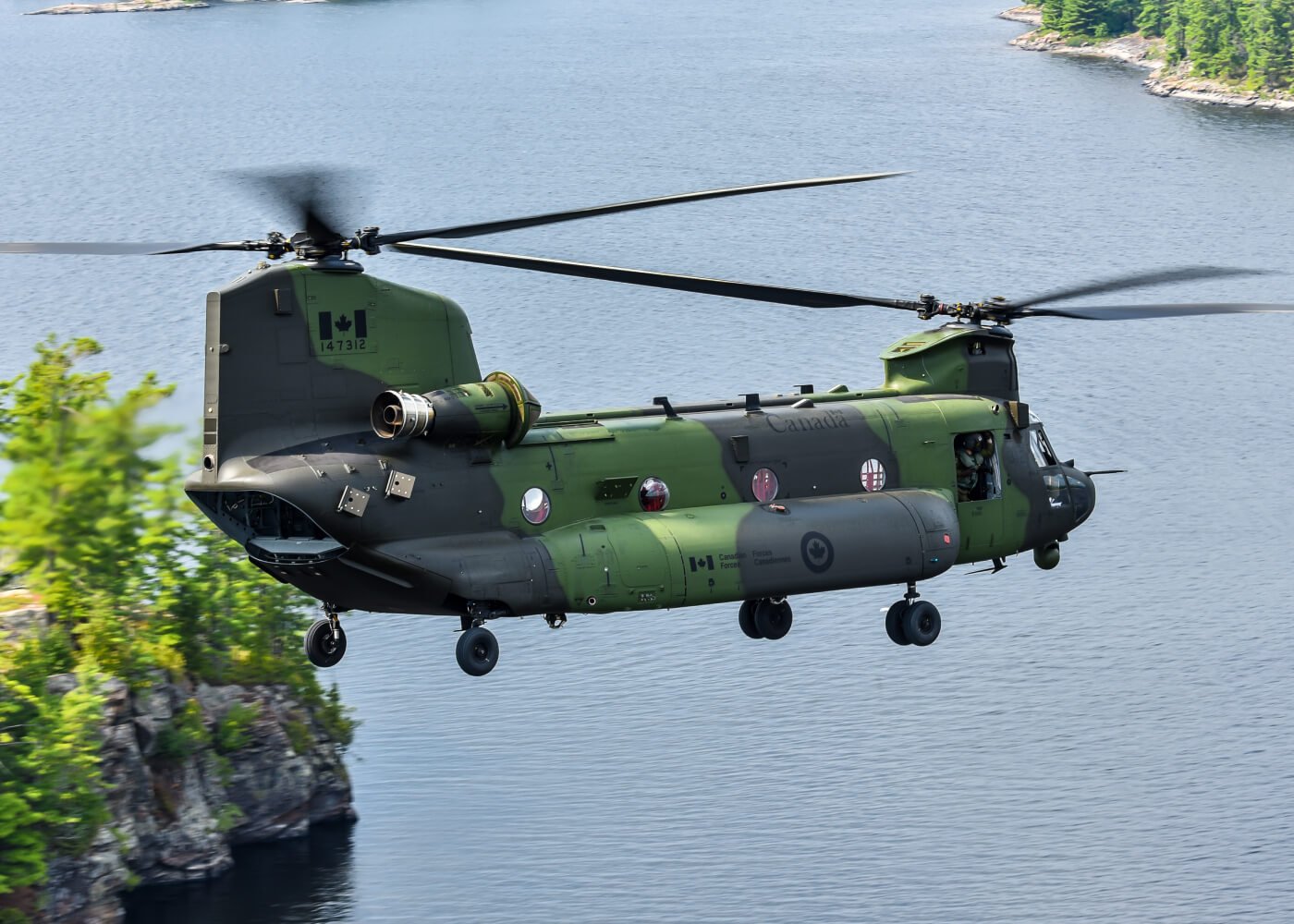Canada’s Department of National Defence (DND) has confirmed that two missing crew members involved in the June 20 crash of a Royal Canadian Air Force (RCAF) CH-147F Chinook helicopter have perished.
The names of the deceased, who were recovered later on June 20 following an extensive search, are not being released out of respect for their families.
The Chinook crashed into the Ottawa River near Garrison Petawawa, home to 450 Tactical Helicopter Squadron and Canada’s CH-147F fleet. The helicopter, carrying two pilots and two aircrew members in the back, was on a night training flight when it went down at about 12:10 a.m. EDT on June 20.
Shortly after the crash, military firefighters rescued the other two crew members, who were taken to hospital in Pembroke with minor injuries. Both were treated and have since been released. Authorities have declined to reveal whether the deceased were pilots or other crew members.
The military said it is providing support services to the families of the two deceased members, the two surviving aircrew members and their families, and to the members of 450 Squadron and Garrison Petawawa.
“The hearts of Royal Canadian Air Force members are heavy with the news from Garrison Petawawa about the loss of two members from 450 Tactical Helicopter Squadron,” said RCAF commander LGen Eric Kenny. “There are no words to describe a loss as tragic as this. On behalf of the entire Air Force family, Chief Warrant Officer Hall and I offer our deepest condolences and support to the families, friends and loved ones of all those affected by this accident.”
The search for the crew of the crashed helicopter was supported by approximately 110 Canadian Armed Forces members. They included divers from 2 Combat Engineer Regiment, as well as CC-130J Hercules and CH-146 Griffon aircraft from 424 Transport and Rescue Squadron, and 427 Special Operations Aviation Squadron. Search efforts were also supported by an Ontario Provincial Police marine and dive unit, as well as the Petawawa and Pembroke fire departments.
“I’d like to offer my personal thanks to the military and civilian search-and-rescue, police and firefighting personnel who stepped up yesterday to help us find our missing teammates and bring them home,” said Chief of the Defence Staff Gen Wayne Eyre in a press briefing on June 21.
In the same briefing, Canadian Defence Minister Anita Anand said that while 450 Squadron will take a respectful pause to recognize this tragedy, there will be “no formal pause in the operation of the fleet at this time.”
The RCAF’s Directorate of Flight Safety (DFS) has begun an independent investigation to determine the cause of the accident. A DFS spokesperson told Vertical that an initial flight safety investigation team arrived in Petawawa on June 20 to begin looking into the accident. Additional members will arrive by June 22. The team of approximately 16 people includes investigators, medical advisers, a fleet ops adviser, as well as a technical/engineering adviser. The helicopter was confirmed to be carrying a cockpit voice recorder/flight data recorder, the contents of which will be analyzed by investigators. At this point, it is unclear whether that unit has been recovered from the crash site.
Generally, the field phase of a DFS investigation lasts from one to two weeks. During this time, investigators conduct interviews, take photos and collect debris for subsequent examination. As the investigation proceeds, a summary of known facts and key focus areas, called “From the Investigator,” will be published on the DFS website. When issued, the final report will include causative factors, preventive measures taken, and recommended preventive measures to follow. It is too early to estimate when this investigation will be concluded.
Canada officially accepted the first of 15 CH-147F Chinook heavy-lift helicopters on June 27, 2013. Since then, the aircraft has been in high demand as a solid and reliable performer at home and abroad. It has delivered critical support to the Canadian Army, special operations forces, other government departments, law enforcement agencies and civil authorities. Many of the missions performed by 450 Squadron occur at night, when the Chinook is often called upon to move Army light infantry battalions within a battlespace.
Here at home, the helicopter has transported equipment and personnel to assist with natural disaster response, as well as the fight against COVID-19. Overseas, the CH-147F served with distinction as the aircraft platform for the Canadian Medical Emergency Response Team (CMERT), an innovative and scalable forward air medical evacuation platform that was successfully introduced by Canada during the U.N. peacekeeping mission in Mali.





